AHNAKOT SMART CITY Master Plan
Location: Papua New Guinea
Total Land Area: 120,000 hectares
Location: Papua New Guinea
Total Land Area: 120,000 hectares
The AHNAKOT Smart City is an ambitious and visionary project designed to create a modern, sustainable, and smart urban hub on 120,000 hectares of land. With a large budget of US$ more billions and a completion timeframe of 6 years, this project aims to integrate cutting-edge smart infrastructure, innovative architecture, and expansive green spaces. The city’s primary objectives are to foster social inclusion, ensure environmental sustainability, and create a balanced, technologically advanced urban ecosystem.
1. Modern International and Papua New Guinea Architecture:
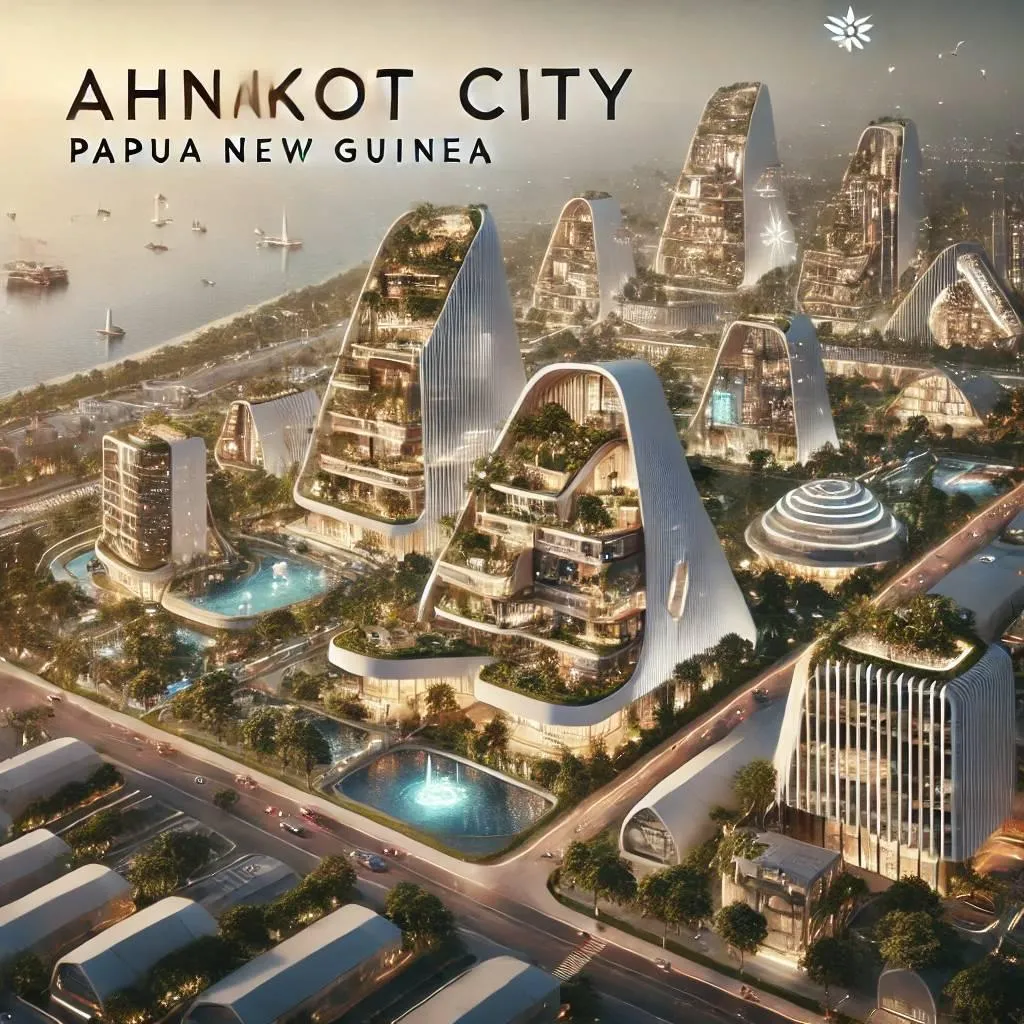
2. Green Spaces:
AHNAKOT Smart City will emphasize large parks, green belts, and **urban farming zones, offering residents a balanced environment that harmonizes with nature.
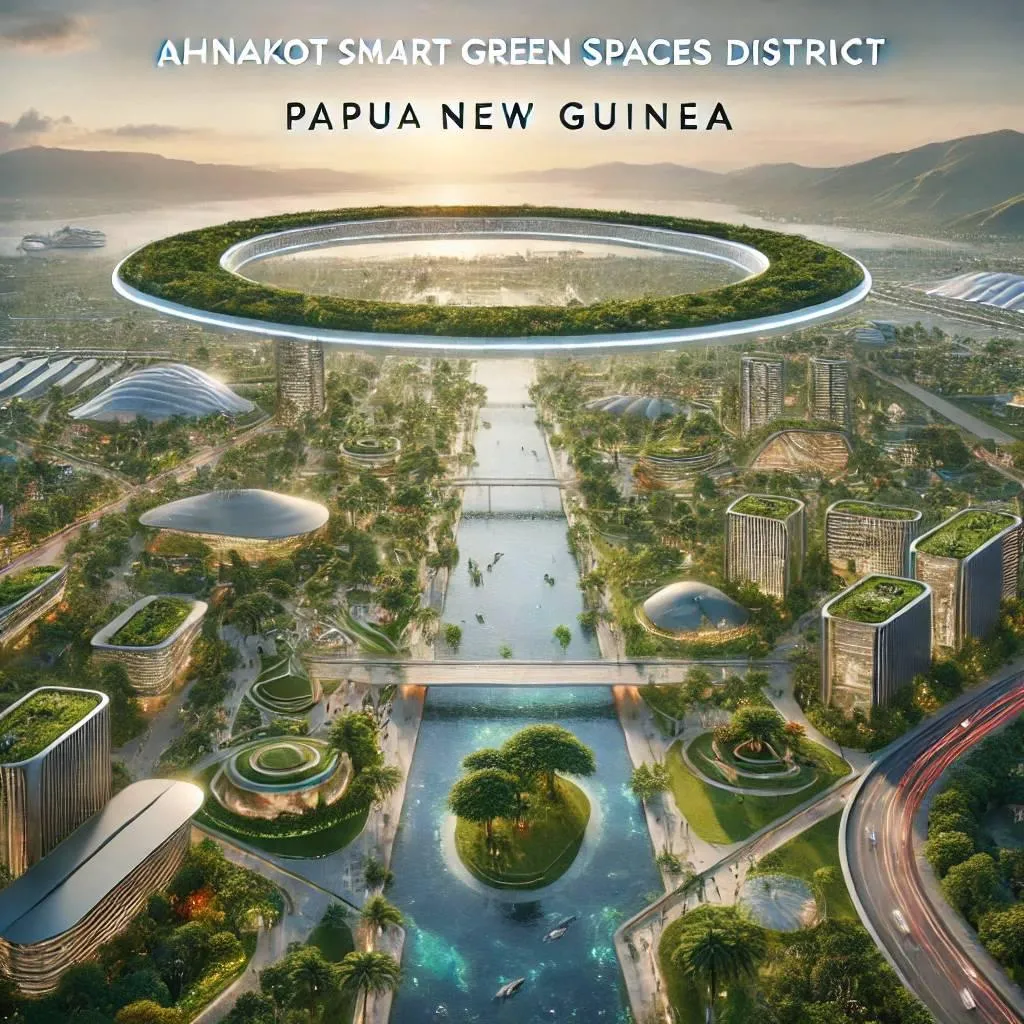
3. Smart Infrastructure:
The city will utilize advanced smart technologies to create intelligent transportation systems, renewable energy solutions, and efficient waste management systems, all aimed at improving residents’ quality of life.
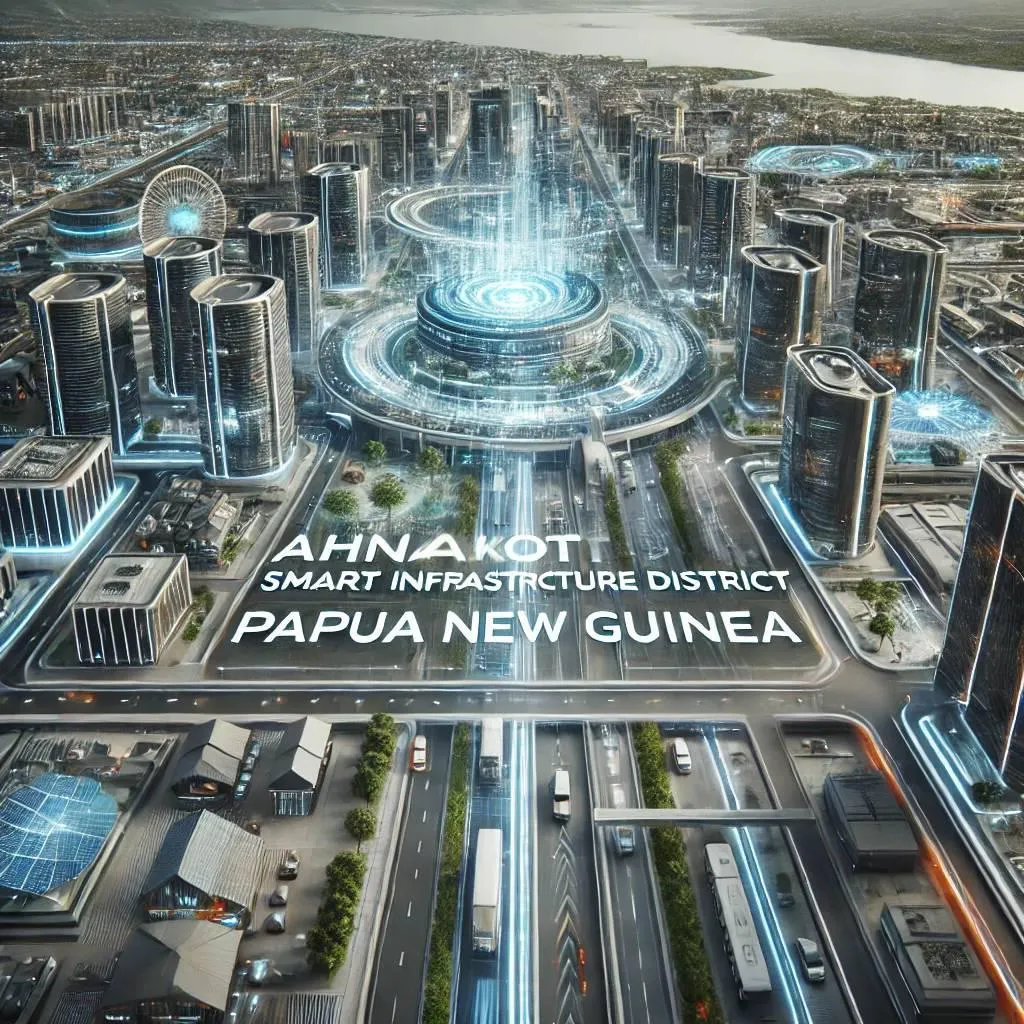
The city will be organized into 52 specialized districts, each focusing on key aspects of urban living and innovation.
1.Affordable Housing District
2. Urban Agriculture and Food Security District
3. AHNAKOT Agriculture and Livestock Zone
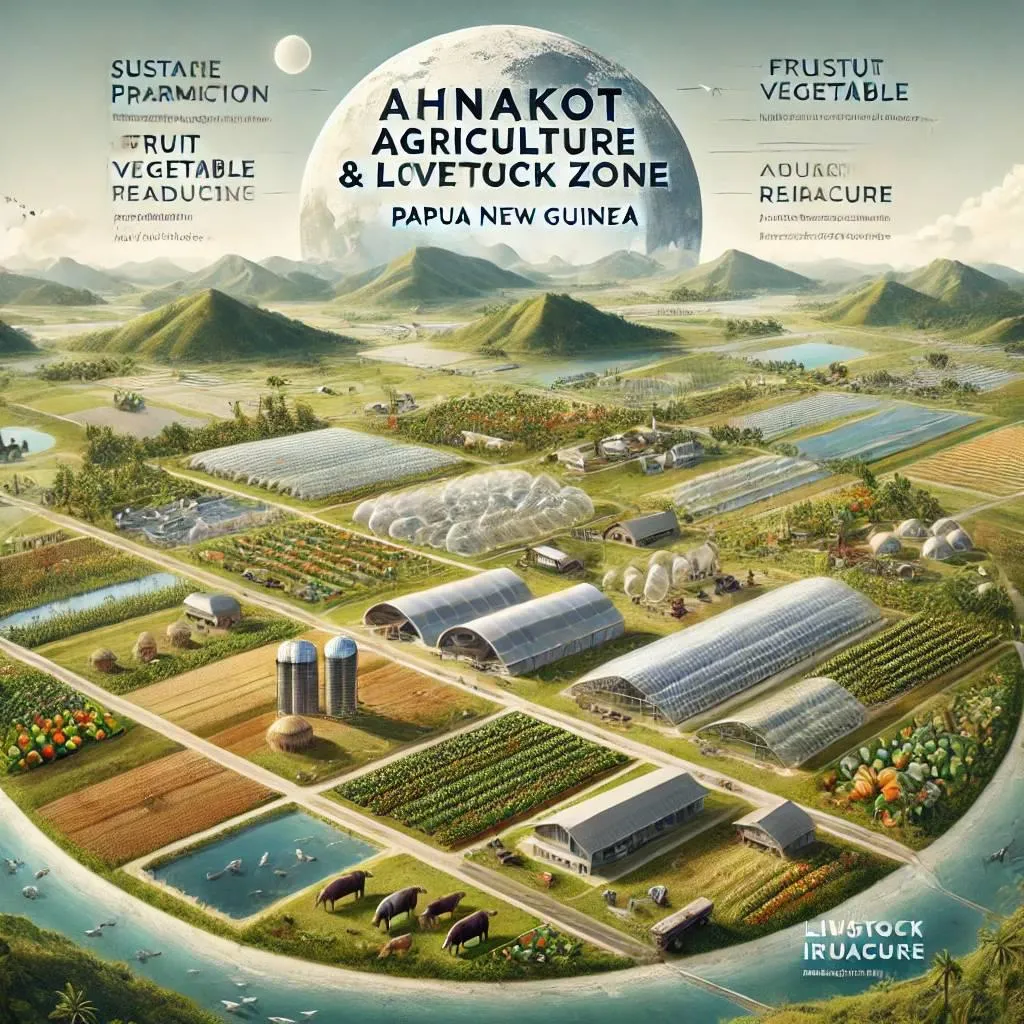
4. AHNAKOT Warehouse and Logistics Center
5. AHNAKOT Global Airport
6. AHNAKOT Papua New Guinea Historical and Cultural Museum
7-14. International Harbor Districts
15. AHNAKOT Lake Tower District:
16. AHNAKOT Museum of the Future:
A forward-thinking museum that explores innovation, technology, and sustainability, with interactive exhibits designed to educate and inspire.
17. AHNAKOT Museum of the Future:
18. AHNAKOT Smart Technology and AI District:
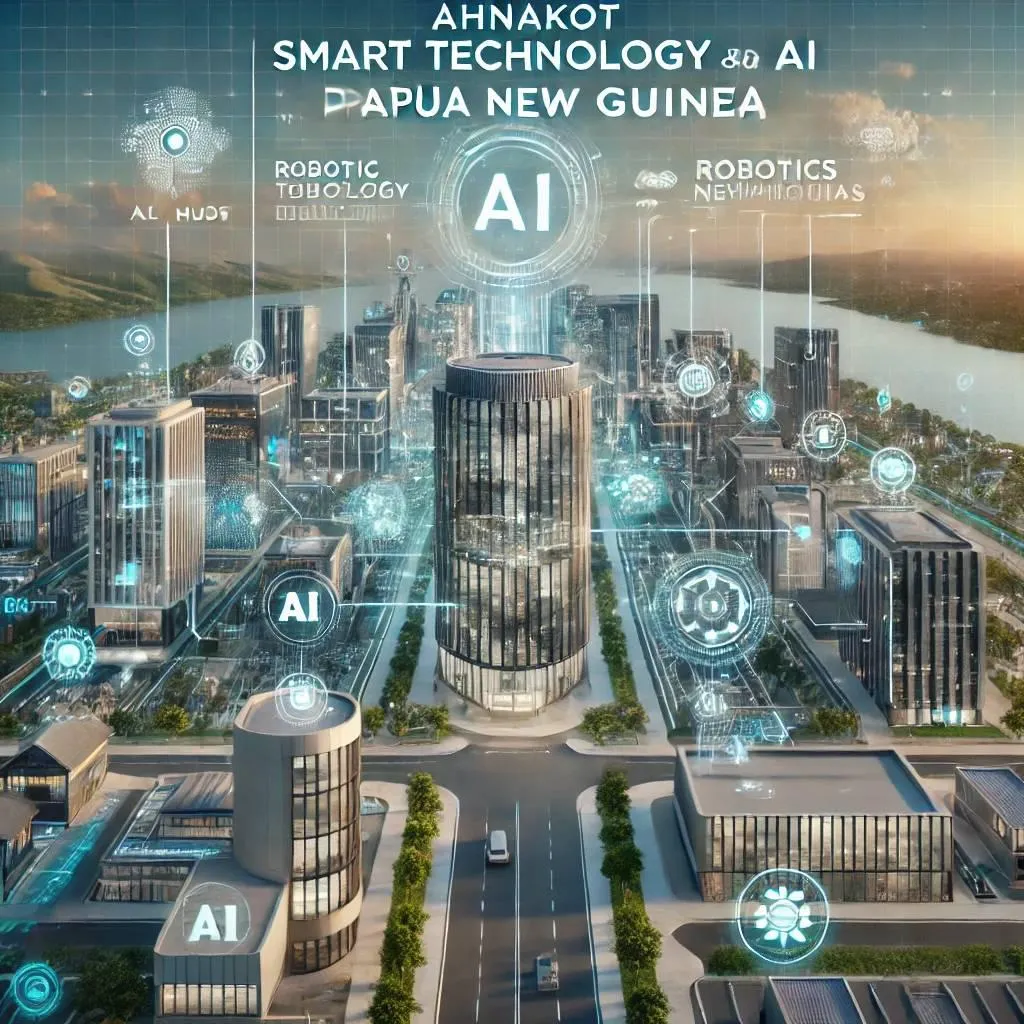
19. AHNAKOT Financial District:
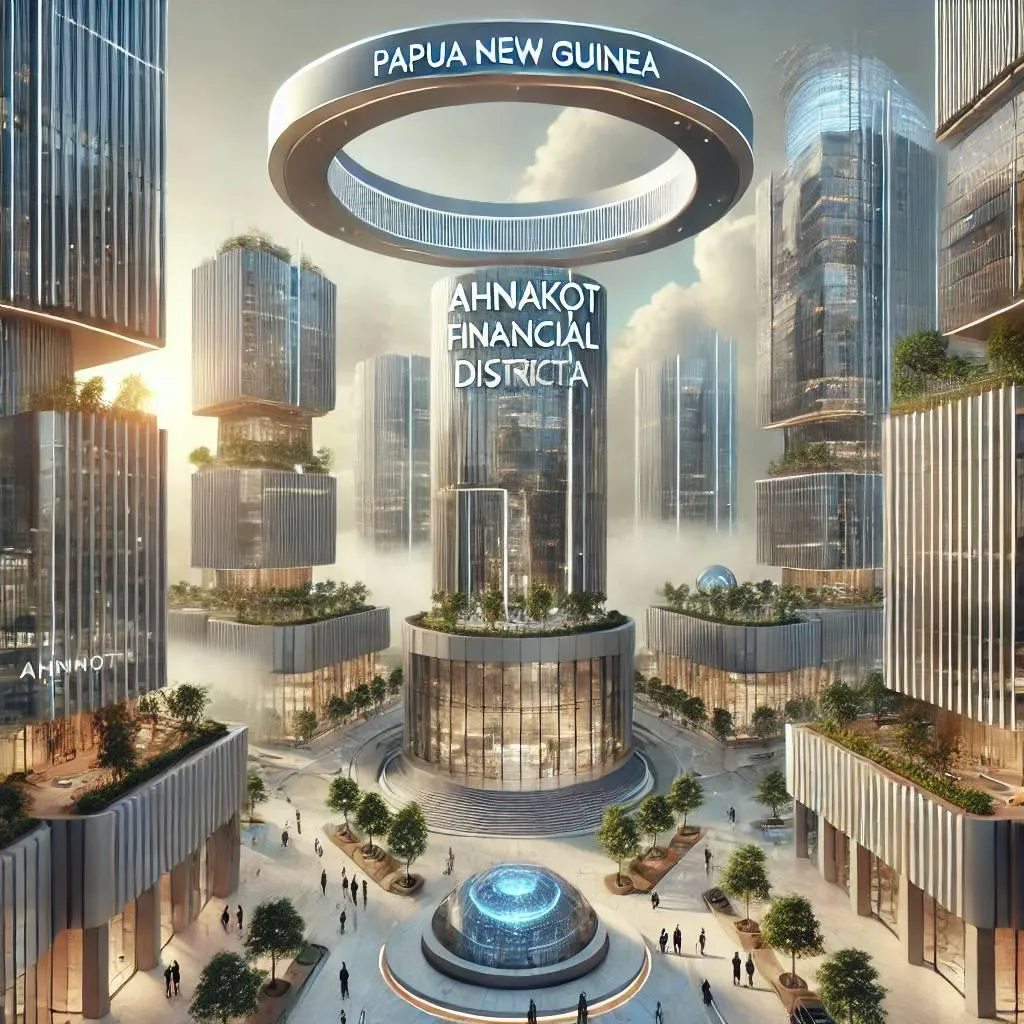
20-25. Additional Specialized Districts:
1. Years 1-2: Establish key transportation, energy, and communication infrastructure to lay the foundation for the city’s development.
2. Years 3-4: Begin the construction of the Affordable Housing District and implement smart city technologies in various districts.
3. Years 5-6: Complete the Urban Agriculture District and finalize the development ofgreen spaces, further enhancing the city’s sustainability.
The AHNAKOT Smart City Master Plan for Papua New Guinea is a pioneering model of urban development, bringing together advanced technology, cultural preservation, and environmental responsibility. With an emphasis on affordable housing, food security, and smart infrastructure, the city is set to become a global leader in sustainable and inclusive urban design.
This professional concept focuses on creating a high-tech smart city that balances modern innovation with cultural identity while addressing critical issues like sustainability and social equity.